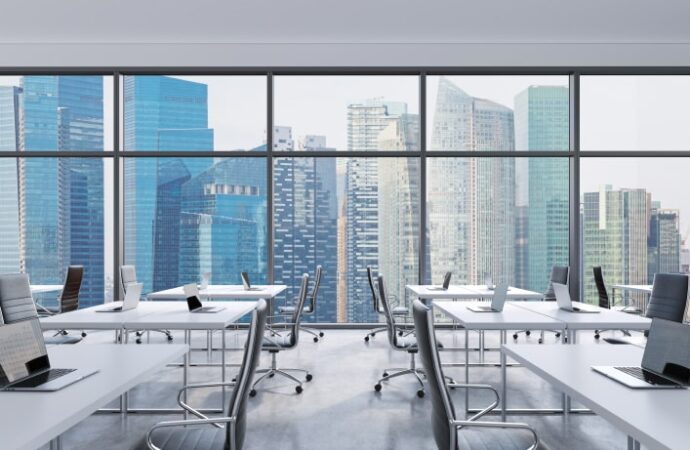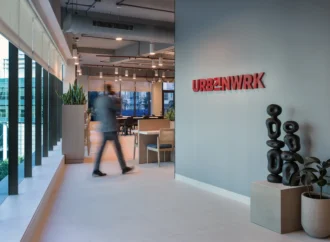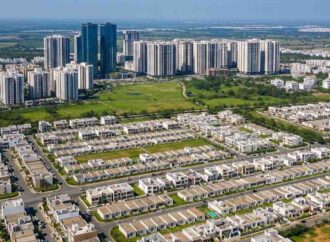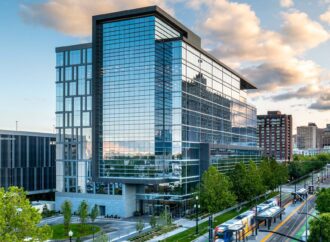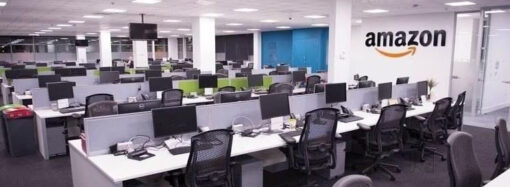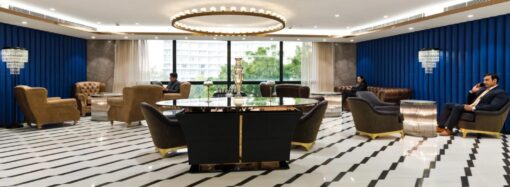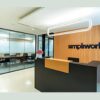The article explores the transformation of Indian workspaces, highlighting trends like hybrid models, sustainability, employee-centric designs, and technology integration. It delves into regional preferences, wellness-driven layouts, and brand-aligned aesthetics. Featuring insights from Meghna Vajani, MD of Space Matrix, it discusses customized office solutions and industry-driven workplace innovations in India.
Indian office spaces are transforming aesthetics—they are now pivotal business assets. Meghna Vajani, Managing Director of Space Matrix, discusses how organizations incorporate sustainability, employee well-being, and brand-aligned design elements. Through intelligent layouts, energy-efficient solutions, and culture-driven workspaces, businesses are redefining productivity and collaboration, turning offices into key growth enablers.
Q1: What are the prevailing trends in office design that enhance productivity, well-being, and efficiency in India?
Office design trends in India are rapidly evolving to create work environments that maximize efficiency and prioritize employee satisfaction. Some of the key trends include:
- Employee-Centric Workspaces: Companies increasingly focus on ergonomics, wellness zones, and flexible workstations to promote physical and mental well-being.
- Hybrid Work-Friendly Designs: With remote and in-office work coexisting, workspaces integrate open collaboration areas and secluded zones for focused tasks.
- Smart Technology Integration: Adopting IoT solutions, automated lighting, and digital booking systems is streamlining workspace management and enhancing productivity.
- Sustainable and Eco-Friendly Architecture: ESG (Environmental, Social, and Governance) compliance drives companies to integrate green solutions, reducing their carbon footprint while fostering a responsible corporate culture.
- Brand-Infused Aesthetics: Companies are aligning their office interiors with their brand identities, using colours, artwork, and layouts to reinforce their corporate values and ethos.
These innovations ensure that modern workplaces remain dynamic, engaging, and future-ready.
Q2: Are there any distinct office space trends specific to companies in West India?
While organizations in West India follow national trends, there are specific regional preferences:
- Personalized Digital Experiences: Companies are leveraging IoT-powered applications to give employees control over lighting and temperature.
- Immersive Design Approaches: Businesses are experimenting with multi-sensory office layouts, allowing employees to experience different workspace setups before finalizing designs.
- Adaptive Layouts: Open-plan designs that seamlessly transition between collaboration areas, private workstations, and casual meeting spaces are gaining popularity, appealing to top talent seeking flexibility.
Q3: How do wellness zones, biophilic elements, and adaptable spaces help prevent employee burnout?
Incorporating wellness-focused designs plays a crucial role in mitigating workplace stress:
- Nature-Infused Environments: Adding greenery and maximizing natural light fosters a calm and refreshing atmosphere.
- Flexible Relaxation Spaces: Breakout areas that allow employees to alternate between focus and relaxation significantly reduce stress levels.
- Holistic Well-Being Approach: Combining ergonomic seating, meditation zones, and health-conscious infrastructure contributes to a healthier work culture.
Q4: What customized workplace solutions does Space Matrix offer to different businesses?
Space Matrix designs workplaces that align with a company’s vision while fostering efficiency, creativity, and well-being. Custom solutions include:
- Employee-Centric Office Layouts – Crafted with business leaders to create engaging, high-performance environments.
- Hybrid and Agile Workspaces – Designs that accommodate diverse working styles, from collaborative areas to quiet focus zones.
- Technology-Enabled Offices – Smart office solutions like IoT-driven space management and advanced meeting room setups.
- Eco-Conscious and Sustainable Designs – Integrating energy-efficient materials and construction practices to promote environmental responsibility.
- Brand-Driven Interiors – Office spaces that reflect a company’s identity through tailored colour schemes and bespoke furnishings.
Space Matrix transforms offices into functional and inspiring business hubs by aligning workspace strategies with company culture.
Q5: What industries have Space Matrix recently collaborated with?
- Private Equity
- Investment Banking
- Algorithmic Trading
- Real Estate
- Technology
- Banking
Q6: How are Indian multinational corporations (MNCs) adapting global office trends to suit their workforce?
Indian MNCs are blending international best practices with local workplace dynamics:
- Localized Adaptation: Instead of replicating Western designs, companies modify global trends to suit India’s workforce diversity and operational scale.
- Employee-First Approach: Designing workspaces tailored to local work habits, cultural nuances, and professional expectations.
- Sustainability with a Regional Perspective: Going beyond ESG compliance by considering resource availability and community-based environmental initiatives.
Q7: What sectors in West India are experiencing significant growth in workplace design, and what’s driving this transformation?
Several industries are rapidly evolving their office designs to reflect their expansion and corporate ethos:
- Financial Sector
- Banks and investment firms are scaling operations, requiring sophisticated office environments that enhance brand identity and client engagement.
- Family-Owned Enterprises
- Traditional businesses are modernizing workspaces to balance legacy values with contemporary business practices.
- Unicorn Startups
- High-growth tech firms prioritize agility and invest in dynamic office layouts, encouraging collaboration and innovation.
- International Corporations
- Global companies are adopting hybrid work models focusing on sustainability, technology integration, and flexible office structures.
Key Factors Driving Workplace Transformation
- Business Expansion: Offices symbolize corporate success and market leadership.
- Hybrid Work Adoption: Flexible work arrangements demand adaptive office spaces.
- Enhanced Brand Presence: Workspaces are now an extension of corporate identity.
- Employee Well-Being: Workspaces are designed to attract and retain top talent.
By implementing tailored design strategies, businesses in West India are creating innovative workplaces and reinforcing their long-term vision and growth trajectory.

